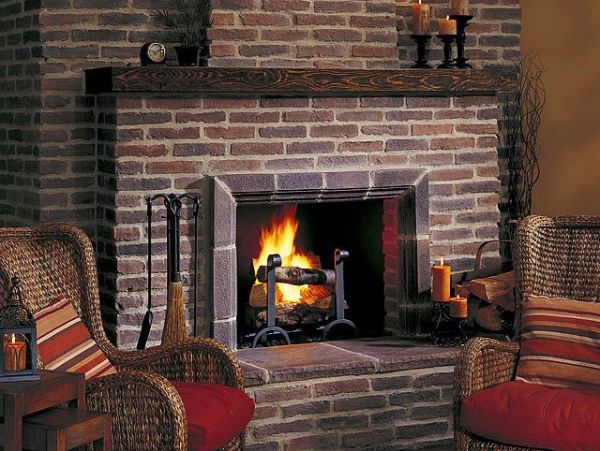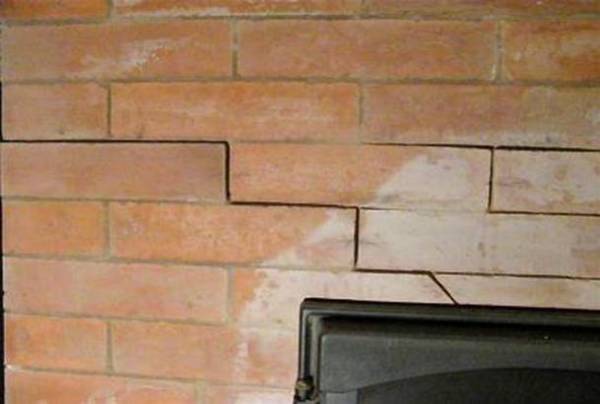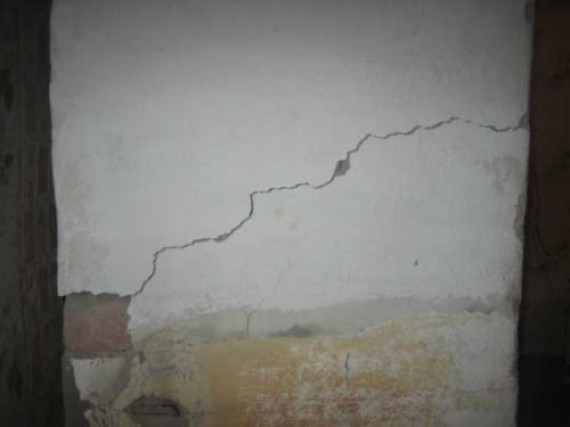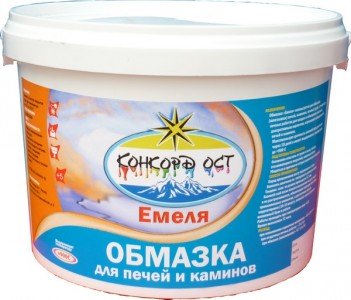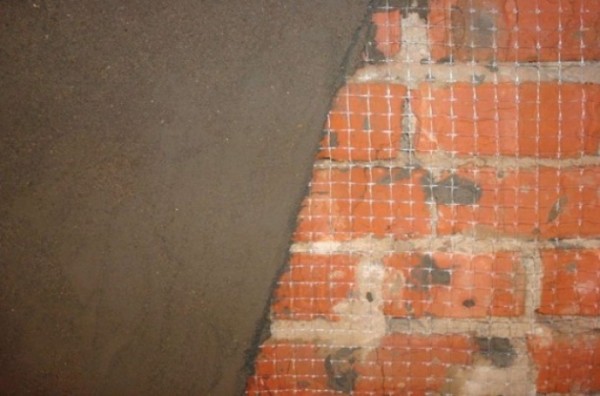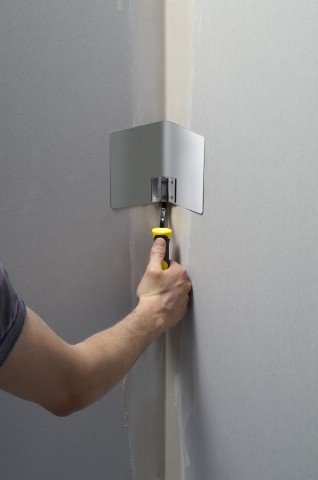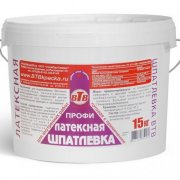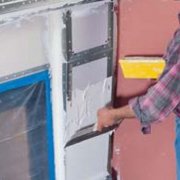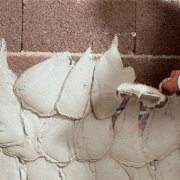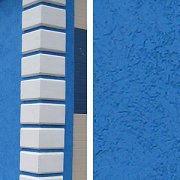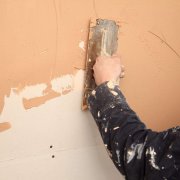Putty for fireplaces and stoves: how to choose
Puttying the stove and fireplace is a very popular process for modern private homes. Many of them and cottages have heating stoves operating on wood fireplaces.
Like any designs, they need a finish that is not afraid of a sharp change in temperature on the surface. Refractory putty for the furnace fully meets these requirements, which will be discussed in more detail in the article.
The content of the article
What is the need to putty stoves and fireplaces
The main reasons why such structures require putty are:
- Giving the building an aesthetic appearance. Any material used to stack the stove requires finishing and leveling brick laying with putty, which is the most popular option. After that flat surface can be painted with heat resistant painttile or just whitewash.
- Securing the operation of the outbreak. Due to the high temperature in the masonry and in the brick, cracks may appear, and smoke will come out through them.
- Traces of soot on the outer walls. This phenomenon is unpleasant, but not the worst, much more dangerous is the appearance of carbon monoxide, which is dangerous for human well-being.
Therefore, the instruction for the construction of stoves and fireplaces requires that the structures be strengthened with plaster or coated with their special compounds.
Before, and now in rural areas, most often clay solutions are used for coating furnaces. But to prepare it of good quality so that the composition is held on a sufficiently hot surface, does not crumble and does not crack, it is quite difficult.
For this you need:
- Accurately determine the fat content of clay.
- Her quality.
This will allow you to correctly calculate the proportions of the components for the preparation of the mixture:
- Sand.
- Lime.
- Water.
It is easier and more reliable to use putty for stoves and fireplaces, which is completely prepared or bred with ordinary water. Such a material is produced by a large number of manufacturers of building mixtures, and they differ in different resistance to high temperatures, which allows you to choose the desired composition.
Features of refractory putty
Most heat-resistant mixtures have a universal composition, which allows you to:
- Smooth the surface evenly.
- Perform starting plastering of the walls.
- Use for laying bricks.
- Use when tiling (see Tiling stoves and everything about it).
Tip: When choosing a composition, it is necessary to pay special attention to its temperature regime during the operation of the stove or fireplace and take this indicator into account when used to finish the structure.
Based on lime and clay, the compositions can be:
- Gypsum-gypsum.
- Lime and clay sand.
- Cement-clay.
Tip: Do not add asbestos to the solution, due to its high toxicity and damage to health.
The location of the outbreak affects the choice of the mixture. For example: for a fireplace located on the street, putty heat-resistant should not have gypsum, because of its very high susceptibility to moisture.
Before you putty the stove, you must correctly select the composition of the material:
- Cement putty can be applied only to decorative foci that will not be heated.
- Unsuitable or deviating from the preparation technology, the selected solution will crack, as can be seen in the photo, which will ultimately lead to premature repair.
Special heat resistant puttiesmust have such positive characteristics:
- Have environmental safety of all constituent components - with strong heating, often cold-harmless elements will decay with the release of toxins, which should not be in putty.
- Possess high strength and increased resistance to significant temperature fluctuations, without this, the use of the composition is prohibited due to the high risk of fire.
- Low risk of cracking on the walls.
- Differ in durability. With proper preparation, and then applying to the surface of the focus, the material will last over 50 years.
- The mixture should be quite flexible so that it can make the surface perfectly smooth.
- High ability to adhere or adhere to the bases made of various materials. Some types of compositions can be used on metal surfaces.
- The best option is a composition based on clay or a lime-gypsum base, which includes refractory fillers.
Disadvantages of refractory putty:
- Higher price than conventional blends.
- The inability to use it for finishing. After puttying, the surface must be painted or tile laid.
How to prepare a solution yourself
After acquiring the finished putty or coating, usually packaged in plastic buckets, before applying to the surface you only need to mix the composition well. The dry mixture must be dissolved with water according to the manufacturer's instructions.
Tip: Each solution has its own expiration date, after which it will begin to lose plasticity. This should be taken into account when preparing such an amount of the mixture so that it is quickly consumed.
To prepare the putty with your own hands you will need:
- Chamotte or oily ordinary clay.
- Lime.
- Sand. Its amount per part of clay is selected from the fat content of the latter.
Without experience, it is very difficult to determine the proportions of the components. To do this, it is better to consult with a competent specialist stove-maker, and even better to use ready-made mixtures. In any case, all putties, including heat-resistant ones, do not fit well on a poorly prepared surface.
Before filling the stove, you must:
- Remove excess masonry mortar.
- Remove old paint.
- Get rid of grease stains and dust.
- Primer the surface.
Tip: Cost is not an indicator of the quality of putty, very often cheap options have better than more expensive operational properties. Therefore, you should first familiarize yourself with the information on the label and get the opinion of specialists in this field.
Quality compounds can be used for:
- Surface finishes.
- Cracks closing.
- Bonding materials for cladding.
How to puttying a furnace
Due to the increased danger when applying putty on a stove or fireplace, a certain technological process must be followed.
In preparation for work, you need:
- Measure all planes to be trimmed and determine their total area. This will be needed to calculate the required volume of material. According to the instructions on the packages, you can roughly orientate on the consumption of the composition.
- Purchase:
- spatulas for applying the solution and leveling it;
- container for preparing the mixture;
- level for flatness control.
- The surface is prepared as needed.
To carry out work on technology, it is necessary:
- Clean the joints between the bricks when laying them to a depth of 5 millimeters, which will improve adhesion, and the solution will hold more reliably.
Tip: For better adhesion of the coating and accelerate its drying, the stove or fireplace should be heated before starting work, but not too much so that the surface is warm, but not hot.
- To reduce the likelihood of cracks on the walls, burlap is used. For this:
- the fabric is soaked in a solution of liquid clay, which will then be coated with a stove or fireplace;
- the material sticks to the wall;
- It is carefully smoothed so that air layers do not appear under the fabric.
- The fabric can be replaced with a metal mesh with a cell of less than 10x10 millimeters. In this case, even when laying brick in the seams, you need to insert a wire with a diameter of about 3 mm to fix the reinforcing layer.
- Immediately before use, a sufficient amount of putty is prepared for the outbreak.
Tip: The layer of the mixture should not be applied with a thickness of more than 5 millimeters in one application, so that the walls do not dry too long, in addition, it is necessary to ensure that the coating thickness is the same, otherwise uneven drying of the surface can lead to a decrease in the strength of the composition.
- Before applying the solution, the surface is wetted.
- The mixture is applied from top to bottom, and then the composition is smoothed with a grater or trowel.
- Particular attention should be paid to the corners of the structure. To do this, it is better to use special spatulas for the corners of the interior and exterior. Such tools will allow all angles to be made even, even without experience in performing the work.
- The plane is aligned with a wooden or polystyrene foam grater. To do this, the surface must be moist. Circular movements of the tool allow you to polish the plane until it becomes perfectly flat.
When the solution solidifies, and the surface has not yet been completely leveled, it should be moistened with water from the spray gun and rubbed further. The video in this article will tell you how to properly putty stoves and fireplaces.
